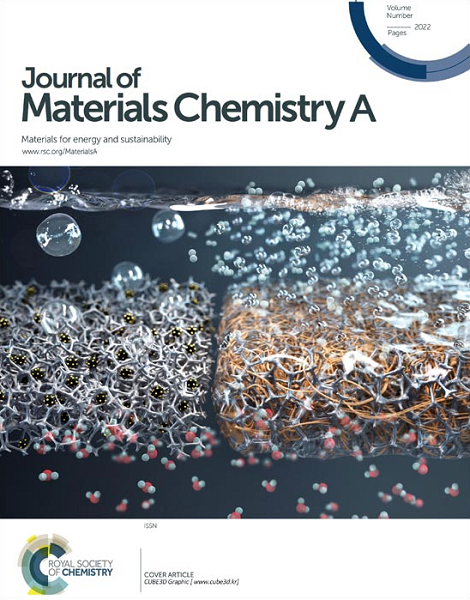Face-to-Face Type Giant Dimeric Donors Synergistically Improve the Stability and Efficiency of Organic Solar Cells
IF 10.7
2区 材料科学
Q1 CHEMISTRY, PHYSICAL
引用次数: 0
Abstract
With the development of organic solar cells (OSCs), maintaining the batch stability of photovoltaic donor materials and improving the device stability are becoming a new challenge. Given the successful application of giant oligomeric acceptors, increasing the molecular size while keeping precise molecular structure have been proven to be an effective method. However, the efficient giant oligomeric donors are still less due to a lack of design principles. Here, we innovatively designed and developed “face-to-face” type giant dimeric donors (GDDs), DZ-1 and DZ-2, by covalently tethering BTR-Cl monomer. Using the different rhodanine-based terminals significantly tuned their molecular interaction and thermal-driven assembly capability. Compare to DZ-1, DZ-2 had moderate molecular stacking and compatible miscibility in the blend film, thus realizing a higher PCE of 13.27%. Importantly, the GDDs with increasing molecular size not only improved the Tg, but also suppressed the molecular diffusion in blend films. Furthermore, the ternary OSCs based on PM6:DZ-2:L8-BO achieved an improved PCE of 19.07% and higher device stability, due to the establishment of 3D charge transport channel and suppression of the molecular diffusion. This study provides a new design strategy of giant molecule donors to develop high-performance and stable OSCs.面对面型巨型二聚体供体协同提高有机太阳能电池的稳定性和效率
随着有机太阳能电池(OSCs)的发展,保持光伏给体材料的批量稳定性和提高器件的稳定性成为新的挑战。鉴于巨型寡聚受体的成功应用,在保持精确分子结构的同时增加分子尺寸已被证明是一种有效的方法。然而,由于缺乏设计原则,高效的巨型寡聚供体仍然较少。本研究通过共价系聚BTR-Cl单体,创新地设计和开发了“面对面”型巨二聚体给体DZ-1和DZ-2。使用不同的罗丹宁为基础的终端显著调整其分子相互作用和热驱动组装能力。与DZ-1相比,DZ-2在共混膜中具有适度的分子堆积和相容的混相,从而实现了更高的PCE(13.27%)。重要的是,随着分子尺寸的增大,gdd不仅提高了Tg,而且抑制了共混膜中的分子扩散。此外,基于PM6:DZ-2:L8-BO的三元OSCs由于建立了三维电荷输运通道和抑制了分子扩散,PCE提高了19.07%,器件稳定性更高。本研究为开发高性能稳定的osc提供了一种新的大分子供体设计策略。
本文章由计算机程序翻译,如有差异,请以英文原文为准。
求助全文
约1分钟内获得全文
求助全文
来源期刊

Journal of Materials Chemistry A
CHEMISTRY, PHYSICAL-ENERGY & FUELS
CiteScore
19.50
自引率
5.00%
发文量
1892
审稿时长
1.5 months
期刊介绍:
The Journal of Materials Chemistry A, B & C covers a wide range of high-quality studies in the field of materials chemistry, with each section focusing on specific applications of the materials studied. Journal of Materials Chemistry A emphasizes applications in energy and sustainability, including topics such as artificial photosynthesis, batteries, and fuel cells. Journal of Materials Chemistry B focuses on applications in biology and medicine, while Journal of Materials Chemistry C covers applications in optical, magnetic, and electronic devices. Example topic areas within the scope of Journal of Materials Chemistry A include catalysis, green/sustainable materials, sensors, and water treatment, among others.
 求助内容:
求助内容: 应助结果提醒方式:
应助结果提醒方式:


